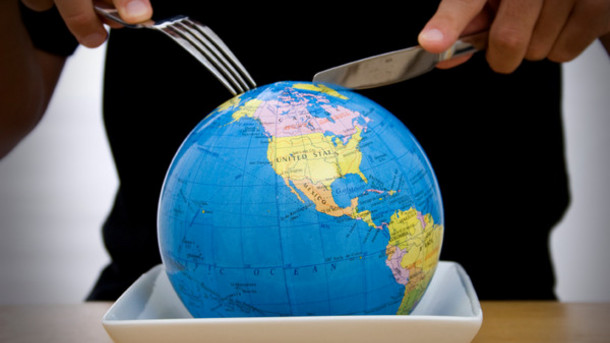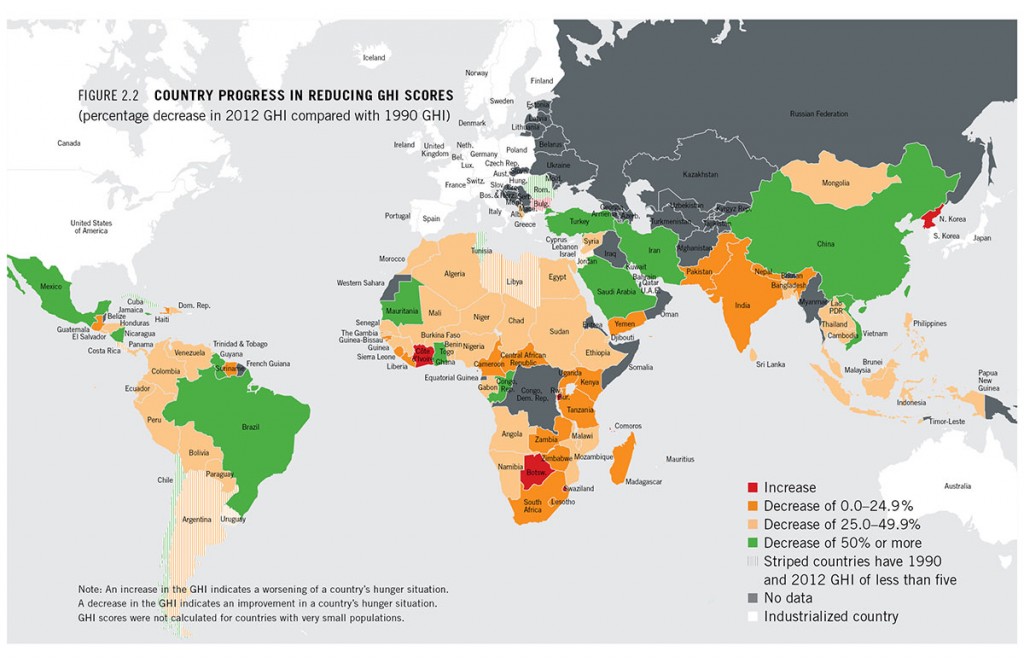Since the mid-20th century agricultural production globally has almost tripled based on data provided by the Food and Agriculture Organization of the United Nations and Earthscan. This is great news. But since 1950 our human population has almost kept pace, growing by 250%. About the same percentage of our global population still suffer from hunger and malnutrition even though the total amount of calories we grow and harvest annually is more than adequate to keep everyone on the planet well fed. The problem of course is much greater than production. Inadequate storage, poor transportation infrastructure, lack of energy availability, freshwater scarcity, and culture are also determining factors in feeding all of humanity.
Add the challenges of environmental degradation of arable lands, growing desertification in marginal farming areas, and the impact of climate change weather events, and you have a degree of uncertainty that agrifood producers need to mitigate against. So the business of growing food has significant challenges to face as our human population grows to 9 billion plus by 2050. Can production keep up or exceed population? Can we improve the infrastructure that supports the planting, harvesting and distribution of food? Can we continue to improve on the types and yields of food we grow? Can we restore agriculture to degraded lands? Can we adapt what we grow to meet what climate change will throw at us?
The State of Agriculture
Today 12% of the planet surface is used for agriculture. Roughly 3% is defined as dry. Dry lands support 30% of our global population and are increasingly drawing on aquifers and other freshwater surface sources to supplement rainfall. Today they are under water stress and trending to worse.
Rain-supported agriculture occupies 80% of the world’s arable land and produces 60% if its crops. Africa, South Asia and South America rely most on rainfall to grow staple crops. They are also the areas at highest risk for soil degradation both in rain-supported and dry agricultural zones. And Africa, South Asia and Soth America are the places on the planet where human population is expected to grow significantly between now and mid century.
Irrigation is critical to agriculture. Almost 40% of global increases in food production is associated with the introduction of irrigation projects to areas previously deemed marginal or dry. To meet food demand for the human population of 2050, based on current agricultural practices investment in irrigation of growing areas needs to increase. There are two problems. The first is that most groundwater sources have been tapped beyond capacity with few new discoveries of any significant size. The second involves surface waters. There are few fewer places where humans can divert water by damming rivers. Fallout from any new projects includes the necessity to relocate human and animal populations, often deterioration in drinking water downstream from dam sites, a decline in the downstream fisheries, water level changes that impact river traffic. None of these issues are trivial and when you combine them with projects that cross national boundaries you can see the potential for water conflicts breaking out. Some prognosticators about the future go as far as to state that the next world war will be fought over freshwater access.
Finally, a word about forest agriculture. Called agroforestry it is a land use system that integrates agricultural crops, livestock and forest resources. Instead of burning or clearing forest lands, agroforestry leaves much of the forest intact with crops interspersed among trees. The trees are harvested as well producing fruit and nuts and providing firewood for fuel. The trees in agroforestry lots act as natural protectors and barriers to wind and protect crops beneath and around them from weather events that could otherwise damage growth. The root systems minimize erosion and maintain soil moisture levels even during periods of drought. Although modern agroforestry may still be in its infancy, it owes its origins to practices that go back thousands of years in places like Amazonia and the Congo. We are only getting back to these practices after learning from our many mistakes.
The State of Hunger
Have you heard of the Global Hunger Index or GHI? In a report put together by the International Food Policy Research Institute or IFPRI, Concern Worldwide and Welthungerhilfe, it states that 20 countries in 2012 faced levels of hunger that were deemed alarming or extremely alarming. These were located in South Asia and Sub-Saharan Africa. The index measures a number of key indicators to arrive at its conclusions. One of these is the number of underweight children. Another is child mortality. And a third is the calorie intake of the general population. On a 100-point scale in which zero equals no hunger, and 100 equals famine, the GHI has been using data from 120 countries to come up with an annual report. The 2012 study reflects data from 2005 to 2010. The good news is the proportion of humanity defined as hungry has declined as a percentage since 1990. The bad news is the absolute number has grown. The map below illustrates those areas on the planet where GHI scores have increased or decreased. Note the green countries. These have made significant progress in feeding their populations. Whereas countries from orange to red are those that continue to have higher incidents of hunger within their populations.
The Solutions
- GM Crops – although there is resistance to genetically modified strains of staple crops, the gene revolution is proving itself by increasing yields and reducing the use of chemical herbicides and pesticides. Areas of greatest promise involve introducing enhanced indigenous crops to subsistence farmers in places like South Asia and Sub-Saharan Africa to help them improve the quality and amount of produce. The African Orphan Crop Consortium is a project launched in 2011 to map the genomes of 100 crops indigenous to Africa that are traditional to the region and consumed locally. The word orphan means these are not typically exported. Crops include Marula, Tef, Ethiopian mustard, Baobab, African Eggplant, Egusi, Amaranth, Matoke (bananas) and Moringa to name a few.
- Agroecology – refers to systems for crop management that not only increase yields but also improve the environment. Agroforestry, mentioned above, is an example of this. In 2006, 286 agroecology projects in 57 countries in the Developing World experienced 64% increased crop yields on average while seeing reduced pesticide use, better management of freshwater, and carbon sequestration. University of California Santa Cruz today runs a Center for Agroecology and Sustainable Food Systems and operates a 25-acre farm dedicated to increasing ecological sustainability in agricultural practices.
- Participation – involves the meeting of minds and bodies that include the growers, particularly the subsistence farmers in the Developing World, and researchers in the Developed World to create a dynamic learning community. Farmers can share their local experiences and traditional practices with those developing new strains of crops and new technologies to improve yields in a sustainable way. Today participation is largely a north-south, Developed to Developing dialogue, but spreading the knowledge and getting the feedback should alter that dynamic in the coming years. Listen to Professor Tim Benton, of the Global Food Security Programme at University of Leeds in the United Kingdom, as he describes the importance of this global trend.










